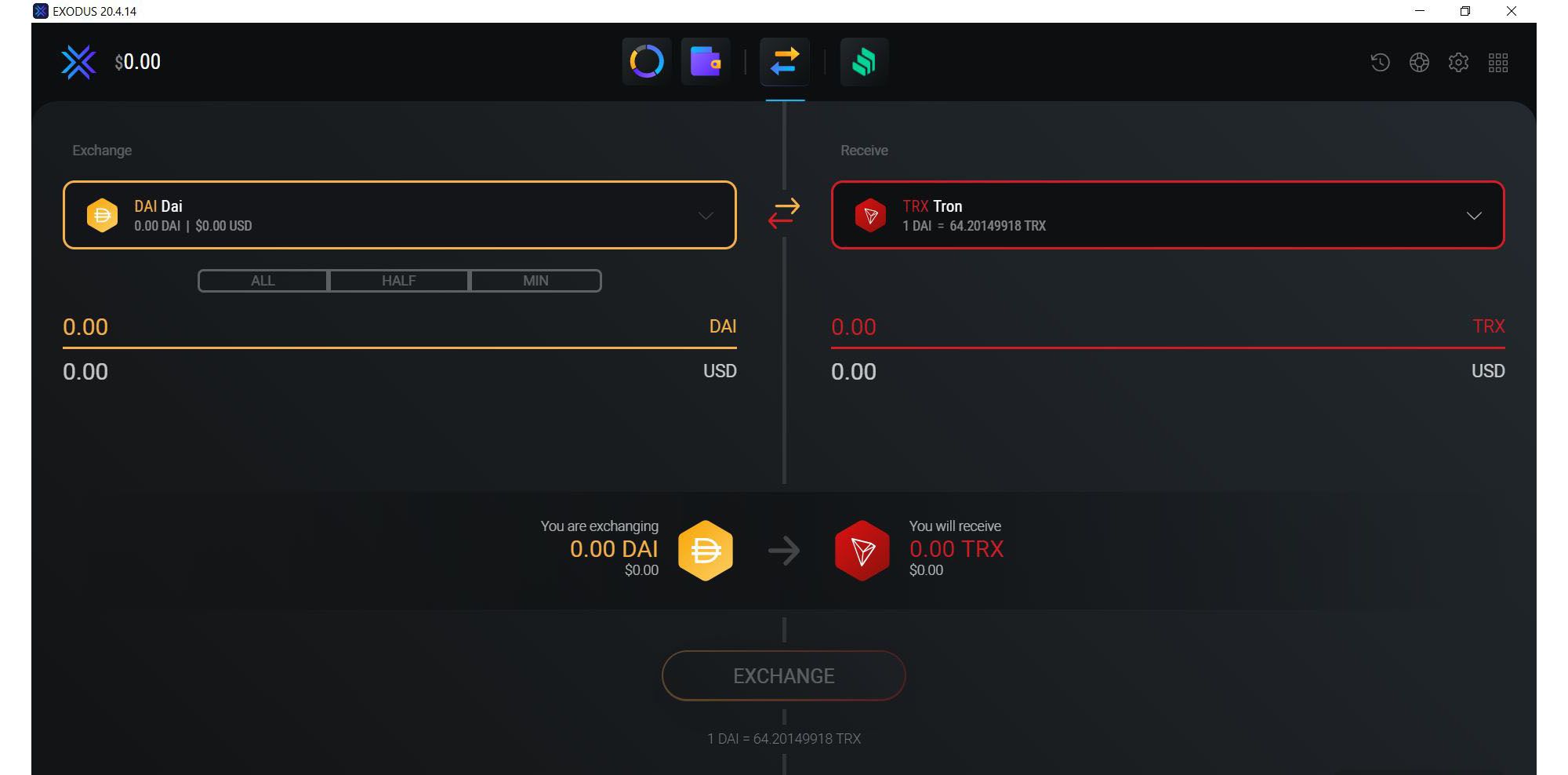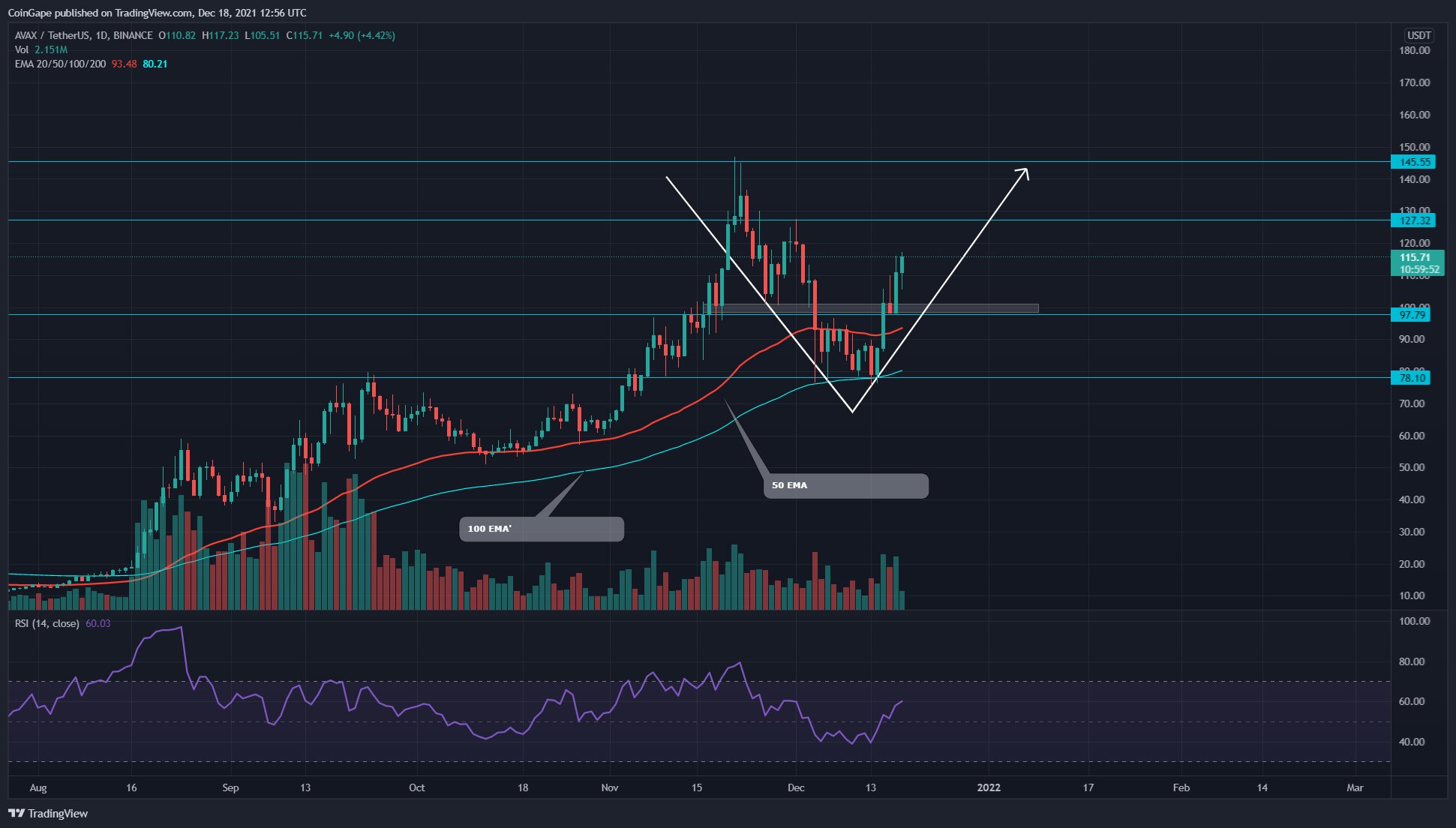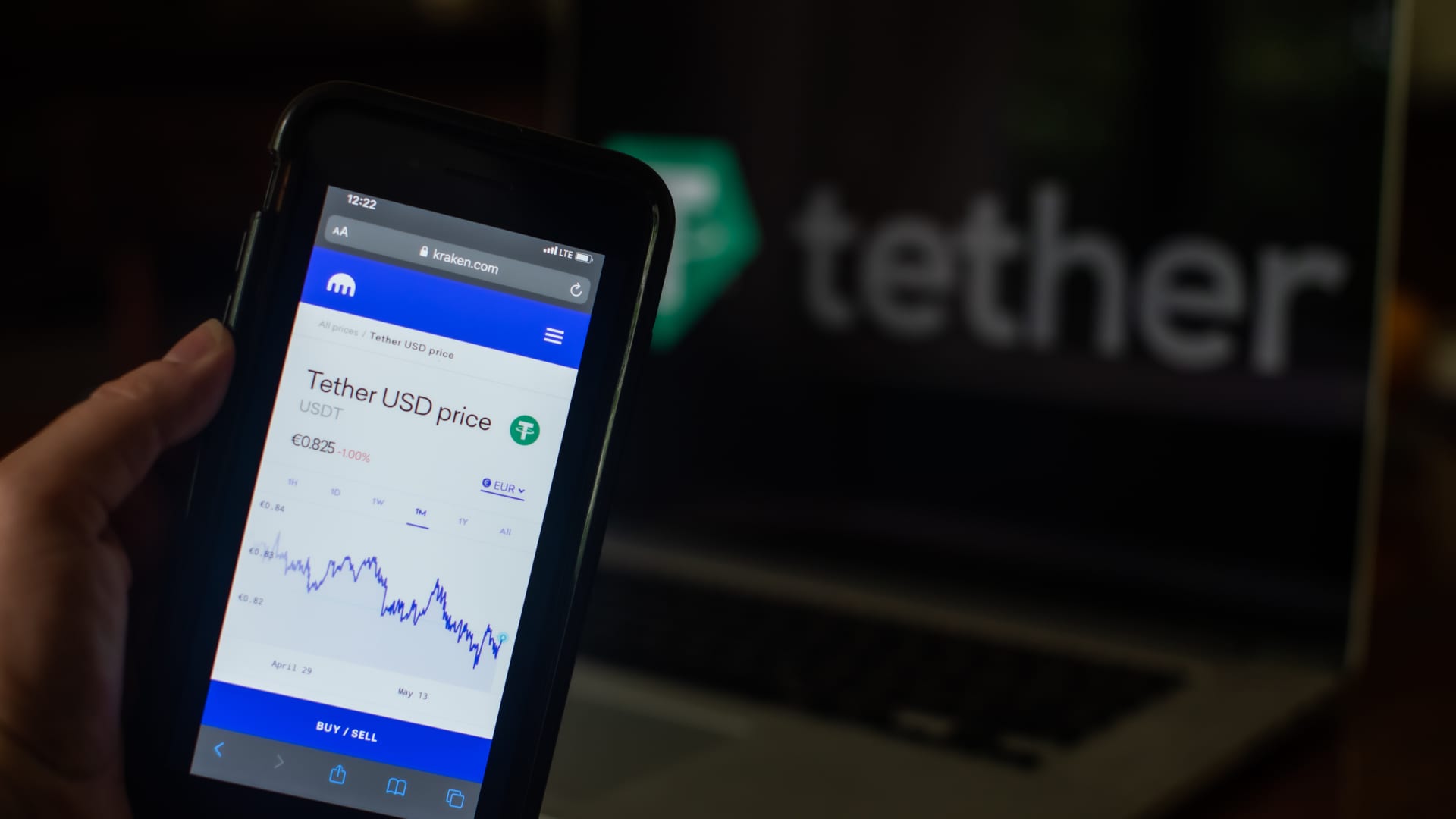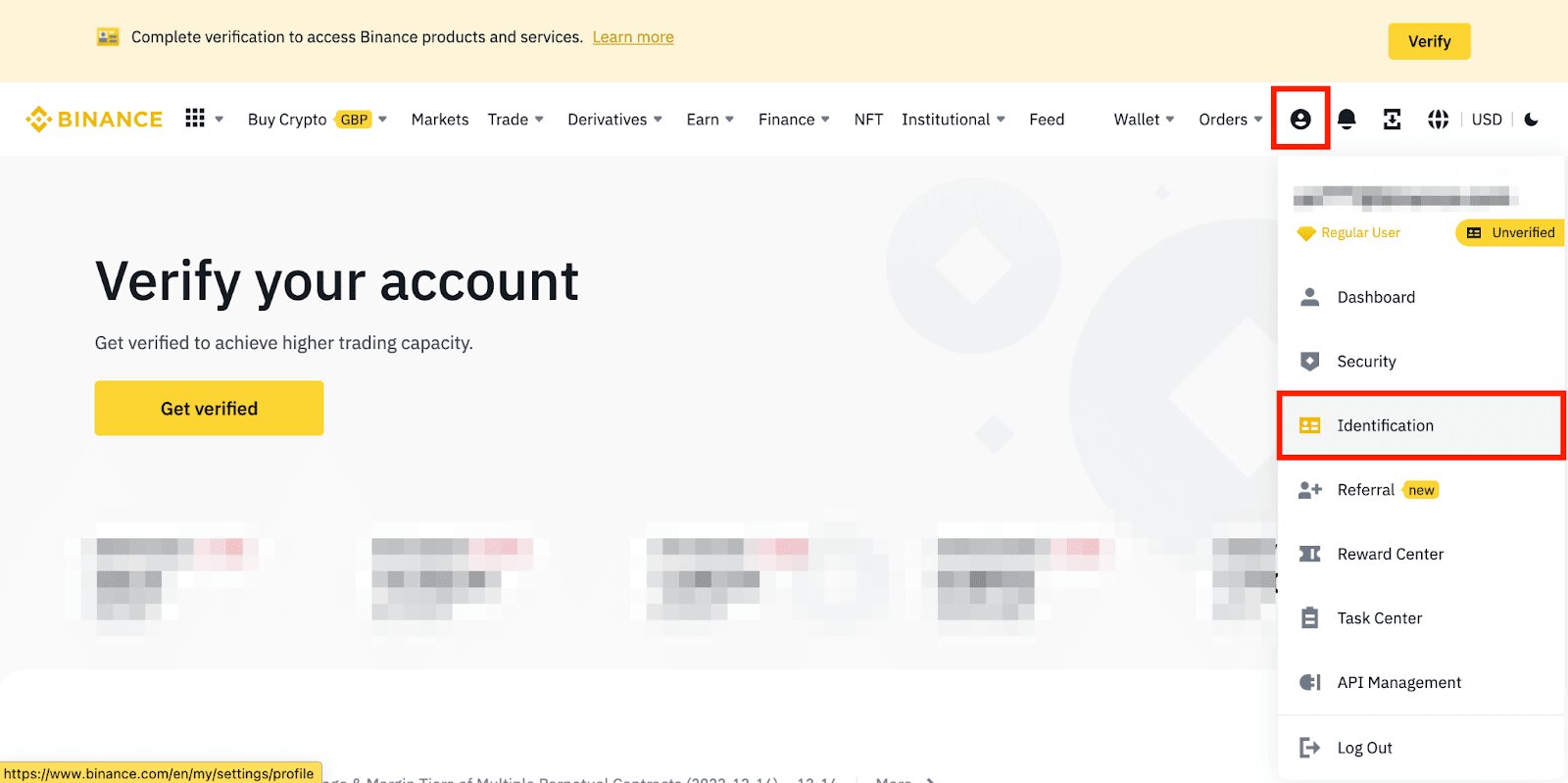Introduction
Welcome to the world of cryptocurrency exchanges! In this digital age, the popularity of cryptocurrencies is skyrocketing, and more and more people are entering the realm of crypto trading. If you’re considering creating your own crypto exchange platform, you’ve come to the right place.
A cryptocurrency exchange is a digital platform that allows users to buy, sell, and trade cryptocurrencies. These exchanges provide a convenient and secure way for individuals to participate in the crypto market. As the demand for cryptocurrencies continues to grow, there is a significant opportunity for entrepreneurs to enter this thriving industry and create their own exchange.
However, building a successful crypto exchange is no easy feat. It requires careful planning, thorough research, and attention to detail. From legal considerations to technological infrastructure and user experience, every aspect needs to be meticulously executed. This guide will provide you with valuable insights and practical tips to help you navigate through the process of creating your own crypto exchange.
Before diving into the technical details, it’s essential to understand the fundamental concepts behind cryptocurrency exchanges. A basic understanding of blockchain technology, cryptocurrencies, and how the exchange market works will lay the groundwork for your journey.
This guide will cover every step of the process, from planning and choosing the right technology stack to designing a user-friendly interface, building the backend infrastructure, implementing security measures, and even marketing and customer support. By following these guidelines, you’ll be well-equipped to launch your own crypto exchange and establish a reputable presence in the industry.
Remember, the crypto market is highly competitive and continuously evolving. Staying up-to-date with the latest trends, regulations, and technological advancements will be crucial to your success. So let’s get started on this exciting journey of creating your very own crypto exchange!
Understanding Crypto Exchanges
Crypto exchanges are the backbone of the cryptocurrency ecosystem. They serve as digital marketplaces where individuals can buy, sell, and trade cryptocurrencies. Understanding how crypto exchanges work is essential for anyone looking to create their own exchange platform.
At their core, crypto exchanges function similarly to traditional stock exchanges. They connect buyers and sellers, facilitate transactions, and provide a platform for price discovery. However, there are key differences that set crypto exchanges apart.
Firstly, crypto exchanges operate 24/7, unlike traditional stock exchanges that have set trading hours. This reflects the global nature of cryptocurrencies and the round-the-clock nature of the market. It enables users from different time zones to participate in trading at any time.
There are two main types of crypto exchanges: centralized and decentralized. Centralized exchanges are the most common and widely-used. They act as intermediaries between buyers and sellers, holding users’ funds in centralized wallets that the exchange controls. Users trade assets within the exchange’s platform, and the exchange executes the transactions on their behalf.
Decentralized exchanges, on the other hand, operate on a peer-to-peer basis without a central authority. They utilize smart contracts on the blockchain to facilitate trading directly between users, eliminating the need for a middleman. Decentralized exchanges offer greater privacy, enhanced security, and a more transparent trading process.
When users register on a crypto exchange, they create an account and undergo a verification process to comply with regulations and prevent fraud. Once verified, users can deposit funds into their exchange wallets and start trading. The exchange’s order book displays the current bids and asks, allowing users to place buy or sell orders accordingly.
Market orders and limit orders are the two main types of orders on a crypto exchange. A market order is executed immediately at the current market price, while a limit order allows users to specify their desired price and waits until the market reaches it before executing the trade.
As with any financial platform, security is of utmost importance in crypto exchanges. Robust security measures such as two-factor authentication, encryption, and cold storage for funds are implemented to protect user assets. Regular security audits and compliance with industry standards are also crucial to maintain a safe environment.
Understanding the intricacies of crypto exchanges and their functionality is key to developing a successful platform. With this knowledge in hand, you’ll be prepared to dive deeper into the process of planning and creating your own crypto exchange.
Planning Your Crypto Exchange
Before you embark on creating your crypto exchange, thorough planning is essential to ensure a successful and sustainable platform. The planning phase sets the foundation for your exchange and helps you make informed decisions throughout the development process. Here are the key aspects to consider:
Market Research: Conduct comprehensive market research to understand the competitive landscape, target audience, and potential demand for your crypto exchange. Analyze existing exchanges, identify gaps in the market, and determine your unique selling proposition.
Business Model: Define your business model based on your research and goals. Determine how your exchange will generate revenue, whether through trading fees, listing fees, or other monetization strategies.
Legal and Regulatory Compliance: Crypto exchanges operate in a highly regulated space. Familiarize yourself with the legal requirements and regulatory frameworks in the jurisdictions where you plan to operate. Ensure compliance with anti-money laundering (AML) and know your customer (KYC) regulations for user verification and fund security.
Partnerships and Relationships: Establish partnerships with banks, payment processors, and liquidity providers. Building relationships with trusted industry players ensures smooth operations and enhances the credibility of your exchange.
Risk Management: Develop a robust risk management framework to mitigate potential threats such as hacking, fraud, and market volatility. Implement measures to protect user funds and data, and conduct regular security audits to identify and address vulnerabilities.
Technology Infrastructure: Select a reliable and scalable technology stack for your exchange. Consider factors such as trading engine performance, scalability, security features, and integration capabilities with external systems.
User Experience (UX) and User Interface (UI): Design an intuitive and user-friendly interface that caters to both beginner and experienced traders. Ensure smooth navigation, clear instructions, and a visually appealing layout.
Liquidity: Liquidity is crucial for a successful exchange. Develop strategies to attract market makers and ensure there is sufficient trading volume to meet user demands.
Marketing and Branding: Develop a comprehensive marketing strategy to build brand awareness and attract users to your exchange. Utilize digital marketing channels, social media platforms, and partnerships with influencers to promote your platform and differentiate it from competitors.
Financial Planning: Create a detailed financial plan that includes projected revenue, expenses, and funding requirements. Consider the initial investment needed for development, operational costs, and future scalability.
Timeline and Milestones: Set realistic timelines and define achievable milestones throughout the development process. This ensures accountability and helps you track progress.
Community Engagement: Foster an active and engaged community around your exchange. Provide educational resources, engage with users through social media and forums, and address their concerns and feedback promptly.
By planning meticulously and addressing these key considerations, you’re laying a solid foundation for your crypto exchange. The next step is to delve into the technical aspects of choosing the right technology stack and designing an optimal user interface.
Legal and Regulatory Considerations
When establishing a crypto exchange, navigating the complex legal and regulatory landscape is paramount. Compliance with applicable laws and regulations not only ensures the legitimacy of your exchange but also protects your users and safeguards the integrity of the market. Here are the key legal and regulatory considerations to keep in mind:
Know Your Customer (KYC) and Anti-Money Laundering (AML) Regulations: KYC procedures require you to verify the identity of your users to prevent fraud, money laundering, and other illegal activities. Implement robust KYC processes that involve identity verification, proof of address, and source of funds verification.
Business Registration and Licensing: Research the legal requirements for establishing a crypto exchange in your chosen jurisdictions. Determine the necessary licenses and registrations, such as money transmitter licenses or virtual currency exchange licenses, and comply with the respective regulatory authorities.
Data Privacy and Security: Safeguard user data by implementing strong security measures aligned with relevant data privacy regulations, such as the General Data Protection Regulation (GDPR). Prioritize user consent, data encryption, and secure storage of personal and financial information.
Consumer Protection: Establish policies and procedures to protect your users’ funds and ensure fair trading practices. Consider measures like segregated user accounts, regular audits, and dispute resolution mechanisms to build trust and confidence among your user base.
Tax Obligations: Understand the tax implications of operating a crypto exchange. Consult with tax experts to ensure compliance with tax regulations and reporting requirements specific to cryptocurrency transactions.
International Regulations: If you plan to offer your exchange services globally, research and comply with the regulations in each target jurisdiction. Understand cross-border regulatory requirements, including licensing, reporting obligations, and restrictions on international transfers.
Partnerships with Compliance Service Providers: Consider partnering with compliance firms that specialize in cryptocurrency regulations. These experts can guide you through the process and ensure adherence to the ever-evolving legal landscape.
Stay Updated with Regulatory Changes: The crypto regulatory landscape is continually evolving. Stay informed about new laws and regulatory developments to adapt your exchange’s compliance practices accordingly. Engage with industry associations and legal experts to stay ahead of the curve.
It is crucial to engage legal counsel experienced in cryptocurrency regulations to navigate the legal aspects effectively. Compliance with legal and regulatory requirements builds trust with users, fosters credibility in the market, and ensures the long-term viability of your crypto exchange.
Choosing a Reliable Technology Stack
When building a crypto exchange, choosing the right technology stack is crucial for ensuring a secure, scalable, and efficient platform. The technology stack refers to the combination of programming languages, frameworks, and tools that will power your exchange. Here are the key considerations when selecting a reliable technology stack:
Security: Cryptocurrency exchanges handle sensitive user data and large amounts of funds, making security a top priority. Choose technologies with strong security features and a track record of reliability. Look for built-in security measures like two-factor authentication, encryption, and secure storage mechanisms.
Scalability: As the popularity of cryptocurrencies continues to grow, your exchange must be able to handle a high volume of transactions and user traffic. Select technologies that are known for their scalability and can withstand the demands of a rapidly expanding user base.
Speed and Performance: User experience is crucial in a competitive market. Opt for technologies that offer fast trade execution, quick order matching, and efficient data processing. The performance of your exchange can significantly impact user satisfaction and retention.
Compatibility: Consider the compatibility of your chosen technologies with other systems and APIs. Seamless integration with payment processors, trading platforms, and external systems will enhance the functionality of your exchange and provide a better user experience.
Community Support: Evaluate the community support and developer resources available for the technologies you intend to use. Robust community support ensures timely updates, bug fixes, and a wealth of resources to address any technical challenges that may arise.
Developer Experience: Your development team’s experience and expertise with the chosen technologies are crucial. Familiarity with the stack will facilitate efficient development, debugging, and ongoing maintenance of your exchange.
Cost-Efficiency: Consider the cost implications of your technology stack. Evaluate licensing fees, hosting costs, and any additional expenses associated with the selected technologies. Striking a balance between cost and functionality is essential for optimizing your exchange’s profitability.
When it comes to the technology stack for a crypto exchange, recommendations typically include proven technologies such as:
- Backend: Technologies like Node.js, Python, or Java for building the server-side logic and handling data processing.
- Database: Reliable and scalable databases such as MySQL, PostgreSQL, or MongoDB to store and manage data efficiently.
- Frontend: Web development frameworks like React.js or Angular.js to create a user-friendly and responsive interface.
- Blockchain Integration: If you plan to offer tokenized assets or integrate with blockchain networks, consider frameworks like Ethereum, Hyperledger, or EOS that offer robust blockchain integration solutions.
- Security: Utilize security tools and libraries to enhance the protection of user data, such as SSL certificates, encryption libraries, and intrusion detection systems.
Ultimately, the technology stack you choose should align with your specific requirements, goals, and budget. Collaborate closely with your development team and consider engaging expert advice to ensure the technologies selected are reliable, well-suited for your exchange, and capable of supporting your long-term growth.
Designing a User-Friendly Interface
Designing a user-friendly interface is vital for the success of your crypto exchange. A well-designed and intuitive interface enhances user experience, fosters trust, and encourages active engagement. Here are key considerations to keep in mind when designing the interface of your exchange:
Clear and Intuitive Navigation: Users should be able to navigate your exchange effortlessly. Ensure that the menu structure is logical and easily understandable. Use clear labels and hierarchical organization to guide users through various sections of your platform.
Responsive Design: With users accessing platforms from a variety of devices, including desktops, tablets, and smartphones, it is crucial to have a responsive design that adapts to different screen sizes. This ensures a seamless experience across all devices and improves accessibility.
Consistent and Cohesive Branding: Develop a cohesive brand identity and apply it consistently throughout your exchange. Use a consistent color scheme, typography, and visual elements that align with your brand. This helps users recognize and connect with your brand, fostering trust and loyalty.
Minimalistic and Clean Layout: Strive for a clean and clutter-free design that prioritizes essential information. Avoid overwhelming users with excessive graphics or irrelevant content. Keep the layout simple and highlight crucial elements, such as trading pairs, order books, and account information, for easy visibility.
Intuitive Trading Experience: The trading experience should be intuitive and straightforward for users of all experience levels. Provide clear instructions on how to place orders, set up stop-loss limits, and navigate through different trading options. Use visual cues and tooltips to assist users in understanding complex trading concepts.
Real-time Data and Market Information: Display real-time data and market information to keep users informed and help them make informed trading decisions. Use charts, graphs, and visual indicators to present market trends and asset performance effectively.
Comprehensive Account Dashboard: Design a comprehensive account dashboard that provides users with a holistic view of their portfolio, trading history, order status, and account settings. Allow users to easily manage their personal information, security settings, and preferences from the dashboard.
Responsive Customer Support: Make customer support easily accessible from within the interface. Incorporate options for live chat, support tickets, email, and a comprehensive knowledge base. Promptly address user queries and concerns to provide a positive customer support experience.
Accessibility and Usability: Ensure your exchange is accessible to users with disabilities. Follow web accessibility standards and guidelines to make your platform usable for individuals with visual or motor impairments. Provide options for font size adjustments and alternative text for images.
User Testing and Feedback: Conduct thorough user testing to identify potential pain points and gather feedback on the usability of your platform. This helps you understand user preferences, make necessary improvements, and refine the user interface based on actual user experiences and needs.
Remember that a user-friendly interface is an ongoing endeavor. Continuously gather user feedback, monitor user behavior, and make iterative improvements to enhance the overall user experience and stay ahead of the competition.
Building the Backend Infrastructure
Building a robust backend infrastructure is critical for the seamless operation of your crypto exchange. The backend is responsible for handling the logic, data processing, and overall functionality of your platform. Here are the key steps involved in building the backend infrastructure:
Database Design and Management: Choose a reliable database system that can handle large volumes of data and transactions. Design the database schema to efficiently store and retrieve user information, trading data, order books, and other relevant data. Ensure proper indexing and optimization for performance.
Order Matching Engine: Implement an efficient order matching engine that matches buy and sell orders according to various parameters, such as price and time priority. The order matching engine should execute trades accurately and provide real-time updates on order statuses.
Wallet Integration: Integrate secure wallets to facilitate the storage, transfer, and management of cryptocurrencies. Implement multi-signature wallets and cold storage solutions to enhance the security of user funds. Ensure seamless integration with the frontend for a smooth user experience.
API Integration: Integrate with external APIs to access market data, liquidity, and trading functionalities. This includes integrating with payment gateways, banking partners, and cryptocurrency exchanges to provide seamless fiat and cryptocurrency transaction capabilities.
Trading and Market Data: Implement robust mechanisms to fetch and process real-time market data, including cryptocurrency prices, trade volumes, and order books. Ensure that the backend can handle high-frequency data updates and provide accurate and reliable trading information to users.
Security and Authentication: Implement strong security measures to protect user data and funds. Use encryption techniques to secure communication channels, employ two-factor authentication for user logins, and implement comprehensive security audits to detect and mitigate potential vulnerabilities.
Scalability and Performance: Design the backend infrastructure to handle a high volume of concurrent users and transactions. Implement load balancing, horizontal scaling, and caching mechanisms to ensure optimal performance, even during periods of high traffic and increased trading activity.
Error Handling and Logging: Implement thorough error handling and logging mechanisms to capture and handle exceptions and errors effectively. Centralized logging allows for easy troubleshooting and monitoring of system activities, ensuring a smooth user experience.
Testing and Quality Assurance: Conduct comprehensive testing and quality assurance measures to identify and resolve any bugs or performance issues. Perform unit testing, integration testing, and stress testing to ensure the stability and reliability of the backend infrastructure.
Documentation and Continuous Improvement: Document the backend infrastructure, including system configurations, APIs, and data flow diagrams. This documentation serves as a valuable resource for troubleshooting, maintenance, and future scalability. Continuously monitor and optimize the backend infrastructure for performance, security, and efficiency.
Building a robust and scalable backend infrastructure requires a skilled development team with expertise in backend technologies and blockchain integration. Collaborate closely with your development team and stay updated with the latest advancements in backend development to ensure a resilient and efficient platform for your crypto exchange.
Integrating Payment Gateways and Wallets
The integration of payment gateways and wallets is a crucial aspect of building a functional and user-friendly crypto exchange. These integrations enable users to seamlessly deposit funds, make transactions, and manage their cryptocurrency holdings. Here are the key considerations for integrating payment gateways and wallets into your exchange:
Payment Gateways: Choose reliable payment gateways that offer seamless integration with your exchange platform. Consider factors such as transaction fees, supported currencies, and user experience. Key payment gateway features should include secure payment processing, real-time transaction updates, and robust fraud prevention mechanisms.
Fiat Currency Support: If your exchange supports fiat-to-crypto transactions, integrate payment gateways that accept traditional fiat currencies. Ensure compliance with relevant Know Your Customer (KYC) and Anti-Money Laundering (AML) regulations for fiat transactions. Coordinate with banking partners to facilitate fiat currency deposits and withdrawals.
Crypto Wallet Integration: Integrate secure and reliable cryptocurrency wallets to facilitate the storage, transfer, and management of cryptocurrencies. Implement hot wallets for immediate liquidity and cold storage for enhanced security. Wallet integration should allow users to view their balances, deposit funds, and make withdrawals securely.
Multi-Currency Support: To cater to a wider user base, support multiple cryptocurrencies in your exchange. Integrate wallets that support a variety of cryptocurrencies, including popular ones such as Bitcoin (BTC), Ethereum (ETH), and Litecoin (LTC).
Security Measures: Implement robust security measures for payment gateway and wallet integrations. Utilize encryption techniques to protect user data and transaction information. Implement multi-signature wallets and cold storage solutions to enhance the security of user funds.
Seamless User Experience: Strive for a seamless and intuitive user experience when integrating payment gateways and wallets. Ensure that the deposit and withdrawal processes are straightforward and user-friendly. Provide real-time updates on transaction statuses to keep users informed and confident about their transactions.
Transaction Monitoring: Implement mechanisms to monitor and track transactions on your exchange. Conduct regular audits and employ fraud detection and prevention techniques to identify and mitigate potential security risks. Maintain transaction logs for transparency and dispute resolution purposes.
Payment Gateway APIs: Familiarize yourself with the APIs provided by payment gateways and ensure smooth integration with your exchange’s backend. APIs allow your platform to communicate with the payment gateway to initiate and process transactions securely.
Wallet APIs: Integrate wallet APIs to provide seamless connectivity between your exchange platform and users’ cryptocurrency wallets. Wallet APIs enable users to view balances, initiate transfers, and monitor transaction history within the exchange interface.
Testing and Eliciting Feedback: Thoroughly test the payment gateway and wallet integrations to ensure their functionality and security. Conduct test transactions and simulate different scenarios to identify and address any potential issues. Solicit user feedback to gain insights into their experiences during payment and wallet interactions, allowing for continuous improvement.
By integrating reliable payment gateways and wallets, you enhance the functionality and accessibility of your crypto exchange. Prioritize security, usability, and a seamless user experience to instill confidence in your users and encourage robust participation in your trading platform.
Implementing Robust Security Features
Implementing robust security features is of utmost importance when building a crypto exchange. The cryptocurrency industry is a lucrative target for hackers and malicious actors, making the security of user funds and data a top priority. Here are key considerations for implementing robust security features:
Two-Factor Authentication (2FA): Implement 2FA to provide an additional layer of security during user logins and transactions. Users can authenticate their identity using a second verification method, such as a one-time password (OTP) sent to their mobile device, enhancing account security.
Encryption: Utilize strong encryption techniques to protect user data, including personal information, passwords, and private keys. Implement encryption algorithms to secure data in transit and at rest to prevent unauthorized access.
Cold Storage for Funds: Store a significant portion of user funds in cold storage. Cold storage ensures that the majority of funds are stored offline, away from potential security breaches. Implement strict access controls and multiple layers of security to protect the cold storage wallets.
Secure Socket Layer (SSL) Certificates: Use SSL certificates to secure communication channels between users and the exchange platform. SSL certificates encrypt the data transmitted between users’ browsers and the exchange, ensuring confidentiality and data integrity.
Server-Side Security: Implement server-side security measures to protect against vulnerabilities and mitigate potential attacks. Regularly apply security patches and updates to server software and frameworks. Use intrusion detection and prevention systems to monitor and respond to potential threats.
Penetration Testing: Conduct regular penetration testing to identify vulnerabilities and weaknesses in your exchange’s security infrastructure. Engage with reputable security firms to simulate attacks and evaluate the efficacy of your security measures. Address any vulnerabilities promptly to minimize potential risks.
DDoS Mitigation: Implement Distributed Denial of Service (DDoS) mitigation strategies to protect against malicious traffic floods that aim to disrupt the availability of your exchange. This includes utilizing content delivery networks (CDNs), implementing rate limiting and traffic filtering, and working closely with DDoS protection service providers.
User Fund Protection: Establish policies and procedures to ensure the safety of user funds. Segregate user funds from exchange operational funds, employing proper accounting protocols. Enforce withdrawal limits and multi-signature wallet technology to prevent unauthorized transfers.
Regular Security Audits: Conduct regular security audits by independent third parties to assess the effectiveness of your security measures. These audits identify vulnerabilities and provide recommendations for improvement, ensuring the continuous enhancement of your exchange’s security posture.
Staff Training and Awareness: Educate your staff on cybersecurity best practices and train them to identify and respond to potential security threats. Create a culture of security awareness and vigilance to prevent internal security breaches.
Regulatory Compliance: Ensure compliance with relevant regulations and industry standards. Familiarize yourself with crypto-specific regulations, such as Anti-Money Laundering (AML) and Know Your Customer (KYC) requirements, and implement appropriate measures to remain compliant.
By implementing robust security features, you build trust with your users, protect their funds, and maintain the integrity of your crypto exchange. Stay updated with the latest security practices, adapt to emerging threats, and continuously invest in the improvement of your security infrastructure.
Testing and Quality Assurance
Testing and quality assurance are essential components of building a reliable and secure crypto exchange. Thorough testing processes ensure that your platform functions as intended, maintains data integrity, and provides a seamless user experience. Here are key considerations in testing and quality assurance:
Unit Testing: Conduct unit testing to validate the functionality of individual components and modules of your exchange. This helps identify and resolve bugs and ensures that each component functions as expected.
Integration Testing: Perform integration testing to validate the interaction and compatibility between different modules and systems within your exchange. This ensures that components work together seamlessly and data is transmitted accurately.
Load Testing: Conduct load testing to simulate high user traffic and maximize system performance under peak load conditions. This ensures that your exchange can handle a large volume of transactions without compromising performance or security.
Stress Testing: Subject your exchange to extreme stress conditions to evaluate its performance and stability. This helps identify any bottlenecks or vulnerabilities that may emerge under intense user activity or unexpected system demands.
Security Testing: Perform comprehensive security testing to identify vulnerabilities and weaknesses in your exchange’s security infrastructure. This includes penetration testing, vulnerability scanning, and code reviews to ensure that security measures are effective and robust.
User Acceptance Testing (UAT): Engage actual users or test groups to perform UAT and provide feedback on your exchange’s usability, functionality, and overall user experience. Incorporate their feedback to make necessary improvements and deliver a platform that meets their expectations.
Regression Testing: Conduct regression testing to ensure that updates or bug fixes have not introduced new issues or caused unintended changes elsewhere in the system. This helps maintain the stability and consistency of your exchange.
Performance Monitoring: Continuously monitor and analyze the performance of your exchange to detect any anomalies, lags, or bottlenecks. Implement monitoring tools and performance analytics to identify areas for optimization and deliver a seamless experience to users.
Data Integrity: Verify the accuracy and integrity of data throughout your exchange. Test data transfer between modules to ensure that data is transmitted, stored, and retrieved correctly. Implement data validation checks to maintain the integrity of user information and transaction records.
Documentation and Processes: Document your testing processes, test plans, and results to ensure consistency and repeatability. This documentation serves as a reference for QA teams, developers, and future updates and enhancements.
Continuous Improvement: Establish a culture of continuous improvement by learning from testing feedback and conducting regular retrospectives. Implement an iterative development process that allows for ongoing enhancements, bug fixes, and optimization based on testing outcomes.
Thorough testing and quality assurance processes are crucial for delivering a reliable and user-friendly crypto exchange. By investing in comprehensive testing, you can mitigate risks, maintain data security, and provide a platform that meets the expectations of your users.
Launching Your Crypto Exchange
Launching your crypto exchange is an exciting milestone that marks the culmination of your hard work and careful planning. It’s crucial to ensure a smooth and successful launch to attract users and establish credibility in the market. Here are key considerations when launching your crypto exchange:
Testing and Quality Assurance: Before launching, conduct thorough testing and quality assurance processes to identify and address any bugs, vulnerabilities, or performance issues. Ensure that your exchange meets the highest standards of functionality, security, and user experience.
Soft Launch: Consider a soft launch before the official launch to a wider audience. This allows you to test your exchange with a smaller, controlled group of users and gather feedback to make any necessary adjustments before opening up to a larger user base.
Marketing Strategy: Develop a comprehensive marketing strategy to generate awareness and attract users to your exchange. Utilize various channels such as social media, content marketing, search engine optimization (SEO), and paid advertising to reach your target audience.
User Onboarding: Streamline the user onboarding process to make it as seamless as possible. Clearly communicate the registration process, document requirements, and verification steps. Provide user-friendly guides or tutorials to help users navigate through your exchange and understand its features.
Liquidity: Ensure sufficient liquidity on your exchange to provide a vibrant trading environment. Establish partnerships with market makers and liquidity providers to ensure competitive pricing and ample trading opportunities for your users.
Customer Support: Prioritize customer support to address user queries, concerns, and issues promptly. Offer multiple channels of support, such as email, live chat, or a ticketing system, and establish robust support workflows to provide efficient resolution of user problems.
Compliance with Regulations: Ensure compliance with applicable regulations and industry standards. Regularly review and update your policies and procedures to adhere to evolving regulatory requirements. Stay informed about changes in legislation and adapt your exchange accordingly.
User Security and Trust: Communicate transparently about the security measures you have implemented to protect user funds and data. Highlight features such as two-factor authentication, encryption, and cold storage mechanisms to instill confidence in your users and differentiate your exchange from competitors.
Continuous Development: Your crypto exchange should be an evolving platform that adapts to user needs, market trends, and technological advancements. Regularly release updates and new features based on user feedback and market demands. Continuously invest in the improvement of your exchange to stay competitive.
Partnerships and Collaborations: Forge strategic partnerships with industry players, such as blockchain projects, payment processors, and liquidity providers. Collaborate with reputable organizations to enhance the credibility and reach of your exchange and tap into their user base.
Education and Awareness: Educate your users about cryptocurrency trading, market risks, and the importance of security measures. Provide educational resources such as blog articles, tutorials, or webinars to empower users and foster a knowledgeable and informed trading community.
Launching your crypto exchange is just the beginning of your journey. Listen to user feedback, adapt to market changes, and continue to innovate to stay ahead in the competitive crypto exchange landscape.
Marketing and Branding
Marketing and branding play a pivotal role in attracting users, establishing credibility, and driving the success of your crypto exchange. By implementing effective marketing strategies and building a strong brand, you can differentiate your exchange in a competitive market. Here are key considerations for marketing and branding your crypto exchange:
Target Audience: Identify your target audience and tailor your marketing efforts to reach them effectively. Understand their demographics, preferences, and pain points to create targeted messaging and engage with them on platforms where they are most active.
Website Optimization: Optimize your exchange’s website for search engines to improve its visibility and organic reach. Conduct keyword research to target relevant search terms and optimize on-page content, meta tags, and URLs. Consider utilizing search engine optimization techniques to drive organic traffic to the site.
Content Marketing: Develop a content marketing strategy to establish thought leadership and provide value to your audience. Create and share engaging content such as blog articles, tutorials, videos, and infographics that educate users about cryptocurrencies, trading strategies, and industry insights.
Social Media Presence: Leverage social media platforms to build an online presence and engage with your target audience. Choose platforms that align with your audience’s preferences and actively share relevant content, industry news, updates, and respond to user comments and inquiries in a timely manner.
Influencer Collaborations: Collaborate with influential figures in the cryptocurrency space to expand your reach and tap into their audience. Engage with industry experts, crypto influencers, and bloggers who can endorse your exchange or review your platform. Implement affiliate programs to incentivize influencers to promote your exchange.
Paid Advertising: Utilize paid advertising channels such as search engine ads, display ads, and social media ads to reach a wider audience. Set clear goals, target specific segments, and use engaging ad creatives to attract users to your exchange. Monitor and optimize your ad campaigns for maximum effectiveness.
Public Relations: Establish relationships with relevant media outlets and journalists to leverage press coverage and gain exposure. Issue press releases to announce important milestones, partnerships, or new features. Engage in public relations activities to build brand credibility and foster positive media coverage.
Affiliate Programs: Implement an affiliate program to incentivize users, partners, and industry influencers to refer new users to your exchange. Offer attractive commission structures and provide marketing materials to facilitate their promotion of your platform.
Email Marketing: Build an email list of interested users and engage them through targeted email marketing campaigns. Send regular newsletters, updates, and personalized offers to keep users informed and create opportunities for re-engagement.
Community Building: Foster an active and engaged community around your exchange. Create social media groups, forums, or chat channels where users can interact, share experiences, and provide feedback. Engage with your community members regularly, address their concerns, and organize contests or events to encourage participation.
Partnerships and Sponsorships: Collaborate with relevant industry partners, blockchain projects, or events to expand your reach and enhance your brand presence. Sponsor industry conferences, webinars, or meetups to showcase your exchange’s offerings and connect with potential users and partners.
Consistent Branding: Develop a strong and recognizable brand identity that reflects the values and unique selling propositions of your exchange. Maintain consistency in brand elements such as logo, typography, color scheme, and voice across all marketing materials to establish brand recognition and build trust.
User Referral Programs: Implement referral programs to incentivize existing users to refer new users to your exchange. Offer rewards such as bonus tokens, fee discounts, or exclusive privileges to encourage user advocacy and drive word-of-mouth marketing.
Effective marketing and branding are critical to the success of your crypto exchange. By implementing a well-rounded marketing strategy, building a strong brand, and fostering a vibrant community, you can attract users, build trust, and carve out your space in the competitive cryptocurrency market.
Customer Support and Maintenance
Providing excellent customer support and ongoing maintenance is essential for the success and sustainability of your crypto exchange. By offering reliable support services and maintaining the platform’s functionality, you can ensure a positive user experience and build long-term relationships with your users. Here are key considerations for customer support and maintenance:
Multi-Channel Support: Offer multiple channels for users to reach out for support, including email, live chat, and ticketing systems. Provide prompt and efficient responses to user inquiries, issues, and feedback through these channels.
24/7 Availability: Ideally, aim for 24/7 customer support availability to address user concerns in real-time. If not possible, clearly communicate your customer support hours and response times to manage user expectations.
Knowledge Base and FAQs: Develop a comprehensive knowledge base or FAQ section that answers common user questions and provides self-help resources. This helps users find solutions to their queries quickly and reduces the overall support load.
Documentation and Tutorials: Create user-friendly documentation, tutorials, and video guides to help users navigate the exchange’s features, understand trading concepts, and troubleshoot common issues. Provide step-by-step instructions to enhance user onboarding and improve self-service support.
Proactive Communication: Regularly communicate with your users through newsletters, blog articles, or social media updates to provide platform updates, educational content, and upcoming features. Keep your users informed about any maintenance activities or system downtime to manage expectations.
User Feedback and Surveys: Encourage users to provide feedback through surveys, feedback forms, or user forums. Actively listen to user suggestions and concerns, and use this feedback to improve your exchange’s functionality, user experience, and customer support processes.
Bug Fixes and System Updates: Continuously monitor your exchange for any bugs or performance issues. Prioritize timely bug fixes and release regular system updates to ensure the platform’s stability, security, and user experience.
Platform Monitoring: Implement monitoring tools to track the performance and availability of your exchange. Monitor key metrics such as uptime, response time, and transaction success rates. Set up alerts to proactively address any issues that may impact user experience.
Scalability and Capacity Planning: Anticipate future growth and plan for scalability to ensure that your exchange can handle larger user volumes and increased trading activity. Assess your infrastructure, bandwidth, and server capacity regularly, and make necessary upgrades to accommodate user demand.
Backup and Disaster Recovery: Implement regular backups and disaster recovery mechanisms to protect user data and ensure business continuity. Establish recovery plans to quickly restore operations in the event of system failures or data breaches.
Regulatory Compliance Updates: Stay up-to-date with regulatory changes and adapt your exchange to remain compliant. Monitor changes in cryptocurrency regulations and implement necessary modifications to ensure compliance with applicable laws.
Community Engagement: Build an active and engaged community around your exchange by organizing events, hosting webinars, or participating in industry discussions. Foster a sense of belonging and encourage users to share their experiences and insights.
By offering reliable customer support and continuous maintenance, you foster user loyalty, maintain the platform’s functionality, and enhance the overall user experience. Prioritize responsiveness, transparency, and a user-centric approach to build trust and strengthen your exchange’s reputation in the crypto community.
Conclusion
Creating a successful crypto exchange requires careful planning, meticulous execution, and ongoing commitment to excellence. Throughout this guide, we have explored various aspects of building a crypto exchange, including understanding the market, legal considerations, technology stack selection, design, security, testing, marketing, customer support, and maintenance.
By understanding the fundamentals of crypto exchanges and conducting thorough market research, you lay a solid foundation for your venture. Legal and regulatory compliance is crucial to ensure the legitimacy and security of your exchange, while choosing a reliable technology stack and designing a user-friendly interface are essential to deliver a seamless trading experience.
Security is of utmost importance, given the increasing risks associated with cryptocurrency exchanges. Implementing robust security features and conducting regular testing and quality assurance will protect your users’ funds and instill trust in your platform.
Marketing and branding play a significant role in attracting users and establishing credibility. Implementing effective marketing strategies, engaging with users, and building a strong brand presence will help you stand out in the competitive market and attract a loyal user base.
Providing excellent customer support and ongoing maintenance ensures that your users have a positive experience and fosters long-term relationships. By continuously addressing user feedback, maintaining the platform’s functionality, and staying responsive to user needs, your exchange will thrive.
Remember, the crypto industry is dynamic and constantly evolving. Stay informed about the latest trends, regulatory changes, and technological advancements. Continuously innovate, adapt to market demands, and seek opportunities to differentiate your exchange.
Building a successful crypto exchange is challenging, but with the right approach, dedication, and a focus on providing value to your users, you can create a thriving platform that contributes to the growing cryptocurrency ecosystem.

























